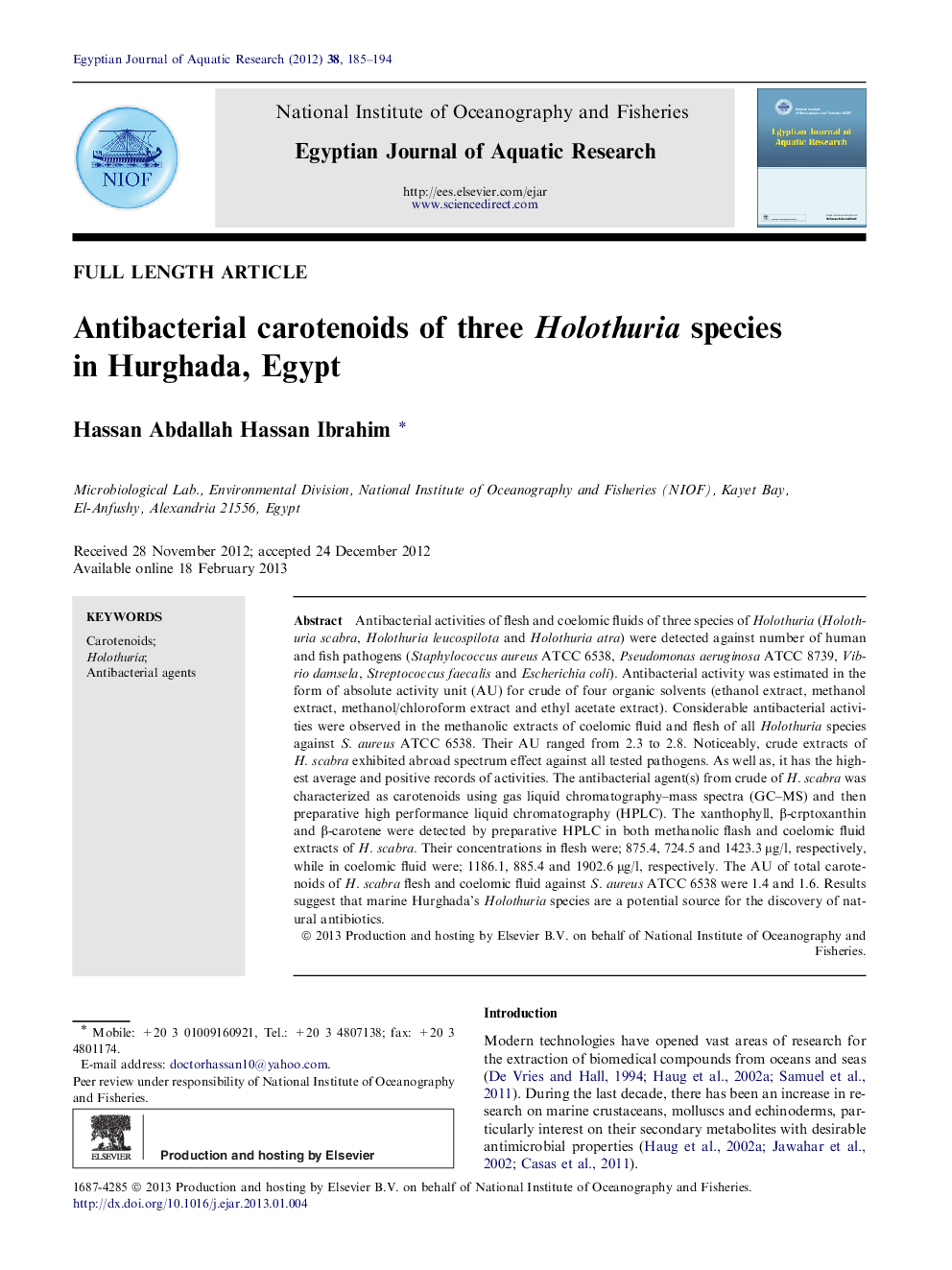| Article ID | Journal | Published Year | Pages | File Type |
|---|---|---|---|---|
| 4493187 | The Egyptian Journal of Aquatic Research | 2012 | 10 Pages |
Antibacterial activities of flesh and coelomic fluids of three species of Holothuria (Holothuria scabra, Holothuria leucospilota and Holothuria atra) were detected against number of human and fish pathogens (Staphylococcus aureus ATCC 6538, Pseudomonas aeruginosa ATCC 8739, Vibrio damsela, Streptococcus faecalis and Escherichia coli). Antibacterial activity was estimated in the form of absolute activity unit (AU) for crude of four organic solvents (ethanol extract, methanol extract, methanol/chloroform extract and ethyl acetate extract). Considerable antibacterial activities were observed in the methanolic extracts of coelomic fluid and flesh of all Holothuria species against S. aureus ATCC 6538. Their AU ranged from 2.3 to 2.8. Noticeably, crude extracts of H. scabra exhibited abroad spectrum effect against all tested pathogens. As well as, it has the highest average and positive records of activities. The antibacterial agent(s) from crude of H. scabra was characterized as carotenoids using gas liquid chromatography–mass spectra (GC–MS) and then preparative high performance liquid chromatography (HPLC). The xanthophyll, β-crptoxanthin and β-carotene were detected by preparative HPLC in both methanolic flash and coelomic fluid extracts of H. scabra. Their concentrations in flesh were; 875.4, 724.5 and 1423.3 μg/l, respectively, while in coelomic fluid were; 1186.1, 885.4 and 1902.6 μg/l, respectively. The AU of total carotenoids of H. scabra flesh and coelomic fluid against S. aureus ATCC 6538 were 1.4 and 1.6. Results suggest that marine Hurghada’s Holothuria species are a potential source for the discovery of natural antibiotics.
